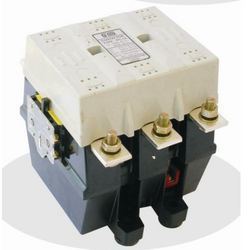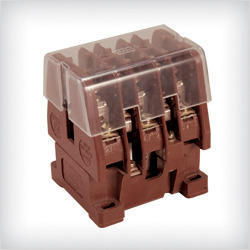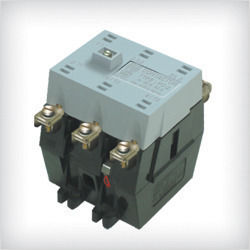- Home Page
- Company Profile
-
Our Products
- HRC Fuse Link
- HRC Fuse Base
- Ceramic Fuse Base - ELCON
- HRC Fuse Base
- Nh Fuse Base
- 630a Hrc Fuse Base
- Hrc Fuse Base
- 160a 3p Fuse Base
- 250a Porcelain Fuse Base
- 400A Fuse Base
- NH Fuse Base
- Elcon Ceramic Fuse Base Holder
- NT Fuse Base
- 3P 160A Fuse Base
- DMC Fuse Base
- 400A HRC Fuse Base
- 630A Fuse Base
- 2500A Fuse Base
- HRC Fuse Holder
- 2500A HIGH SPEED SEMI CONDUCTOR FUSE BASE EQUIVALENT TO FERRAZ SI DIN 110 630A
- DC MCB
- On Load Changeover Switch
- Switch Disconnector
- Link Disconnector
- Fuse Puller
- Motor Starter
- HBC Fuse Link
- Rewirable Porcelain Kit Kat Fuse
- Bakelite Fuse Fittings
- STAR-DELTA Motor Starters
- Busbar Support
- DOL Motor Starters
- Circuit Breaker
- AC Air Break Contactors
- Thermal Overload Relay
- Switch Disconnector Fuse Unit
- Distribution Boxes and Disconnector
- Distribution Boxes
- Heavy Duty Switch Disconnector With Hod
- RDSS Approved 250A TP Isolator Switch Disconnector
- RDSS Approved 250A HRC Fuse-base
- MSEB Approved DMC Kit Kat Fuse Unit
- 200A Link Disconnector
- RDSS Approved HRC Fuse-link
- RDSS Approved Link Disconnector
- RDSS Approved 100A DMC Kit Kat Fuse Unit
- Service Fuse Fitting , House Service Cutout
- Final Distribution Products
- ELCON 32A Single Pole MCB
- Elcon Mr.SAFETY 6A Single Pole Miniature Circuit Breakers Mcbs
- Elcon Mr.SAFETY 10A Single Pole Miniature Circuit Breakers Mcb
- Elcon Mr.SAFETY 16A Single Pole Miniature Circuit Breakers Mcbs
- Elcon Mr.SAFETY 32A Single Pole Miniature Circuit Breakers Mcbs
- Elcon Mr.SAFETY 63A Single Pole Miniature Circuit Breakers MCBS
- Elcon Mr.SAFETY Tiny Trip Mcbs 6 Amp To 32 Amp Sp Dp
- Elcon Mr.SAFETY 20A Single Pole Miniature Circuit Breakers Mcbs
- RCCB Residual Current Operated Circuit Breaker
- ELCON 40A Double Pole MCB
- Elcon Mr.SAFETY 25A Single Pole Miniature Circuit Breakers Mcbs
- Elcon Mr.SAFETY 40A Single Pole Miniature Circuit Breakers Mcbs
- Elcon Mr.SAFETY 50A Single Pole Miniature Circuit Breakers Mcbs
- ELCON MCB Changeover Switch
- 2 Way Centre OFF MCB Changeover Switch
- Electrical Distribution Boxes
- DC Switch Disconnector
- ELCON Isolator Switch Disconnector DC, For Industrial, DC 500V - 1500V
- 125A DC Switch Disconnector, 2P & FP, 1000V-1500V DC
- DC Switch Disconnector, 1000V-1500V DC
- 400A DC Switch Disconnector, 2P & FP, 1000V-1500V DC
- 200A DC Switch Disconnector, 2P & FP, 1000V-1500V DC
- 315A DC Switch Disconnector, 2P & FP, 1000V-1500V DC
- 630A DC Switch Disconnector, 2P & FP, 1000V-1500V DC
- 800A DC Switch Disconnector, 2P & FP, 1000V-1500V DC
- 100A DC Switch Disconnector, 2P & FP, 1000V-1500V DC
- 160A DC Switch Disconnector, 2P & FP, 1000V-1500V DC
- Dumeco DC switch-disconnectors
- 250A DC Switch Disconnector, 2P & FP, 1000V-1500V DC
- ELCON Solar DC Switch Disconnector 1000V DC 1500V DC
- HRC Fuse Puller for DIN Type HRC Fuses
- LV HRC Fuse Extractor With Sleeve
- Fuse Extracting Handle
- NH LV HRC Fuse Puller with Long Insulated Handle
- HRC Fuse Puller with Long Handle Equivalent to Siemens Type 3NX 1011
- Long Handle Fuse Puller
- Fuse Puller With Long Insulated Handle
- Long Handle Fuse Puller
- Fuse Puller with Insulated Fuse Pulling Sleeve
- FUSE EXTRACTION HANDLE SIMILAR TO ABB OFAE506
- J Type Feeder Pillar Fuse Link for Wedge Type Fuse Carriers
- Switch Fuse Unit
- Utility Products
- Power Contactor
- Submersible Pump Control Panel
- Dc Fuse
- Switchgears
- Tool & Die Design
- FOUR POLE CONTACTOR
- Three Pole Contactor
- Moulded Bakelite Fuse Fittings
- Tool Manufacturing Services
- Contact Us
- HRC Fuse Link
- HRC Fuse Base
- DC MCB
- On Load Changeover Switch
- Switch Disconnector
- Link Disconnector
- Fuse Puller
- Motor Starter
- HBC Fuse Link
- Rewirable Porcelain Kit Kat Fuse
- Bakelite Fuse Fittings
- STAR-DELTA Motor Starters
- Busbar Support
- DOL Motor Starters
- Circuit Breaker
- AC Air Break Contactors
- Thermal Overload Relay
- Switch Disconnector Fuse Unit
- Distribution Boxes and Disconnector
- Service Fuse Fitting , House Service Cutout
- Final Distribution Products
- DC Switch Disconnector
- HRC Fuse Puller for DIN Type HRC Fuses
- Switch Fuse Unit
- Utility Products
- Power Contactor
- Submersible Pump Control Panel
- Dc Fuse
- Switchgears
- Tool & Die Design
- FOUR POLE CONTACTOR
- Three Pole Contactor
- Moulded Bakelite Fuse Fittings
- Tool Manufacturing Services
Power Contactor
Product Details:
- Thermal Conductivity Standard for industrial contactors
- Interface Screw terminals
- IP Rating IP20
- Features Heavy duty, long life contacts, easy mounting
- Usage Industrial power distribution
- Power Supply Electric
- Output Load output terminal
- Click to View more
X
Power Contactor Price And Quantity
- 1 Piece
Power Contactor Product Specifications
- Electric
- Load output terminal
- Standard body thickness (approx. 45 mm)
- 25A-32A
- Motor starting, control panels, switching circuits
- IP20
- 50/60 Hz
- Industrial power distribution
- Black and grey
- Heavy duty, long life contacts, easy mounting
- 415V AC
- Compact
- Standard for industrial contactors
- Screw terminals
- Power Contactor
- Switching and controlling high power circuits
- No display
- Electric mains
- 90*45*85 mm
- Up to 32A (varies by model)
- Instantaneous (mechanical switching)
- Coil, contacts, arc chute, enclosure
- 220-415V AC
- Control voltage input terminal
- Approx. 650 grams
- -5°C to 55°C
Product Description
Approx. Price: Rs 6,000 / PieceProduct Description:
Power Contactor is specifically designed for the purpose of establishing or interrupting AC current circuit. Suitability varies depending upon frequency, rated insulation voltage and rated operation current.| Type | AC-3 Duty Rating At 415V, 50Hz | Max. 3 Phase Motor Output at 415V AC | Auxiliary Contacts | Cat No. | Unit Price (Rs.) | Unit Case | |
| KW | HP | ||||||
| PC 2 | 32A | 15 | 20 | 2NO+2NC | PC 21502 | 1845 | 8 |
| PC 3 | 40A | 22 | 30 | 2NO+2NC | PC 21503 | 2448 | 8 |
Robust Electrical Performance
Engineered for industrial environments, the Power Contactor boasts a remarkable electrical durability of over 1 million operations and mechanical life exceeding 10 million operations. This ensures minimal downtime and optimal reliability for heavy-duty switching, making it ideal for constant use in power distribution panels and motor control centers.
Versatile Coil Voltage Options
Catering to diverse power requirements, this contactor comes with coil voltage choices including 24V, 48V, 110V, 230V, and 415V AC/DC. This range offers flexibility in integrating the device into various industrial automation and control systems, ensuring compatibility regardless of site voltage standards.
User-Friendly Installation and Operation
With a compact design (90x45x85 mm) and dual mounting options (DIN rail and base), installation is straightforward even in tight spaces. Screw clamp terminals provide secure, easy wiring, and clearly designated terminals ensure correct connections for both control input and output.
FAQs of Power Contactor:
Q: How do I select the appropriate coil voltage for my Power Contactor?
A: To choose the right coil voltage, first check your control circuits available voltage (24V, 48V, 110V, 230V, or 415V AC/DC). Select a contactor model with a matching coil voltage to ensure proper operation without risk of coil damage.Q: What are the main applications of this contactor in industrial settings?
A: This Power Contactor is widely used in motor starting, industrial control panels, power distribution systems, and switching high-power circuits. Its robust design and high electrical durability make it suitable for frequent and prolonged operations in demanding environments.Q: When should I use auxiliary contacts with the contactor?
A: Auxiliary contacts are recommended when you need to signal or interlock with other devices in your system. For example, they can be used for remote status indication, control circuit feedback, or to trigger additional relays or alarms.Q: Where can I mount this contactor for optimal performance?
A: You can mount the contactor onto a DIN rail or secure it on a base plate inside your control panel. Ensure the location is within the specified ambient temperature (-5C to 55C) with appropriate ventilation and away from excessive moisture, though it accommodates up to 95% relative humidity.Q: What benefits do silver alloy contacts provide in this contactor?
A: Silver alloy contacts offer superior conductivity and resistance to arc erosion, supporting long-lasting, reliable switching with minimal power loss. This enhances overall durability and ensures stable electrical connections over millions of cycles.Q: How do I connect and operate this Power Contactor?
A: Simply wire the control voltage to the input terminals using the screw clamp connectors, and connect your load to the output terminals. When the coil is energized, the contacts switch instantly, enabling or isolating the connected load as required.Tell us about your requirement

Price:
Quantity
Select Unit
- 50
- 100
- 200
- 250
- 500
- 1000+
Additional detail
Mobile number
Email

 English
English Spanish
Spanish French
French German
German Italian
Italian Chinese (Simplified)
Chinese (Simplified) Japanese
Japanese Korean
Korean Arabic
Arabic Portuguese
Portuguese





 Call Me Free
Call Me Free
